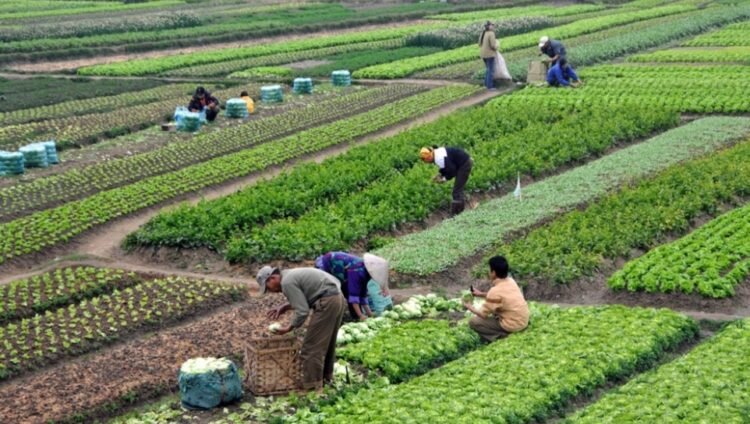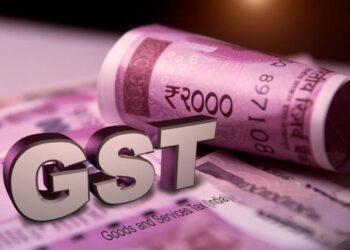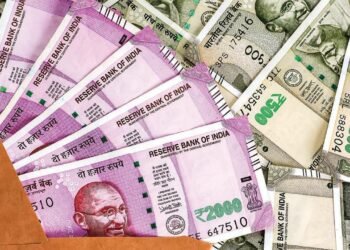Agriculture’s share in India’s economy has decreased to less than 15% due to the growth of the industrial and services sectors. However, agriculture remains very important in India’s economic and social structure.
Firstly, almost three quarters of Indian families rely on rural incomes. Secondly, the majority of India’s poor around 770 million people or 70% live in rural areas.
Thirdly, India’s food security depends on growing cereal crops and increasing the production of fruits, vegetables and milk to meet the needs of a growing population with rising incomes. To achieve this, agriculture in India must become more productive, competitive, diverse and sustainable quickly.
India is a global leader in agriculture. It is the world’s largest producer of milk, pulses and spices and has the largest cattle herd (buffaloes) and the most extensive areas for wheat, rice and cotton. It is also the second largest producer of rice, wheat, cotton, sugarcane, farmed fish, sheep and goat meat, fruits, vegetables and tea. India has about 195 million hectares of cultivated land with 63% rainfed (about 125 million hectares) and 37% irrigated (70 million hectares). Additionally, forests cover around 65 million hectares of India’s land.
Importance of Agriculture in the Indian Economy
More than half of India’s population depends on agriculture which is very important for the Indian economy:
- Agriculture provides many job opportunities in both farming and non-farming activities.
- Agriculture is important for international trade including imports and exports.
Role of Agriculture in the Indian Economy
Agriculture is important in every economy regardless of its development level. It meets basic human needs by providing food and non-food items. It includes:
- Food crops like rice, wheat, coarse grains and pulses.
- Cash crops like oilseeds, cotton and sugarcane.
- Beverage crops like tea and coffee.
- Horticultural crops like fruits, vegetables, flowers, spices, cashews and coconuts.
In addition, agriculture includes related activities like milk and dairy products, poultry and fisheries. Many developed and industrialized countries initially grew their industries through agriculture.
Contribution to GDP:
Since independence, the agricultural sector has played a pivotal role in contributing to India’s GDP. In the period between 1950 and 1951, agriculture provided about 59% of the country’s total GDP which highlights its critical importance in the early years of India’s economic development. There is a famous trading app which you can use for earning money with opinion trading.
Largest Employment Sector
Agriculture is the largest employment sector in India. More than half of the country’s population is employed in agriculture with about 55% of the people engaged in farming and related activities. This sector remains a key source of livelihood for millions of Indians.
Source of Food
As the second most populous country in the world, India relies heavily on its agricultural sector to feed its vast population. Agriculture supplies essential food items that sustain the nation. However, there is a growing need to diversify and increase the dependency on other sectors of the economy to ensure balanced growth and reduce over reliance on agriculture. This diversification is essential for the country’s long term economic stability and development.
What is the Relationship between Agriculture and Industrial Sector?
Just like dhankesari, there is always a need for raw materials and most industries in the country get their raw materials from agriculture. Half of the income generated by India’s industrial sector comes from agriculture based industries. Therefore, agriculture plays a very important role in India’s economy.
Commercial Significance:
Agriculture is crucial for India’s industrial development and trade. Agricultural products like tea and coffee are major exports and textiles made from agricultural materials contribute significantly to the country’s total exports.
Source of Government Revenue:
Agriculture is a major source of revenue for both the Central and State Governments. The government earns significant income from land revenue. Additionally, sectors like railways and roads generate a good portion of their revenue from the transportation of agricultural goods. This highlights the vital role of agriculture in supporting various parts of the economy and generating income for the government.
Role of Agribusiness in Monetary Preparation
India’s planning potential also relies on the agricultural sector. A good harvest boosts the country’s economic growth by improving the business environment for transportation, manufacturing, domestic trade, etc. A good harvest also provides the government with significant funds to cover its planned expenses.
Food Security for Developing Countries
Farming is the main source of food for India’s large population which provides about 60% of the country’s domestic consumption. Due to high population growth and increasing demand for food, agricultural production is rising quickly. In developing countries, even a slight increase in personal income leads to a rapid rise in food demand. If agriculture cannot supply enough food, a crisis may occur. Many developing countries face this challenge and have developed their agriculture to meet growing food needs.
Role of Agriculture in Economic Planning
India’s economic planning heavily relies on agriculture. A good harvest boosts economic development by improving the business environment for transportation, manufacturing and domestic trade. It also provides the government with funds for planned expenses. Conversely, a poor harvest can lead to economic depression and disrupt financial planning. Thus, agriculture plays a vital role in India’s economy and its development is crucial for overall economic growth and diversification.
Conclusion
The Indian economy relies heavily on agriculture which supports both industry and international trade through imports and exports. Despite its decreasing contribution to the overall economy over time, agriculture remains the most crucial sector for a large portion of the workforce.
Many people depend on agriculture for their livelihoods. It not only provides food and raw materials but also fuels other industries and contributes significantly to global trade.
Even as India’s economy diversifies into other sectors like services and manufacturing, agriculture’s role in ensuring food security and supporting millions of livelihoods cannot be overstated. Its impact extends beyond economic metrics to include social stability and national development goals. Therefore, while its relative share in the economy may change, agriculture continues to be a cornerstone of India’s economic and social fabric.





















